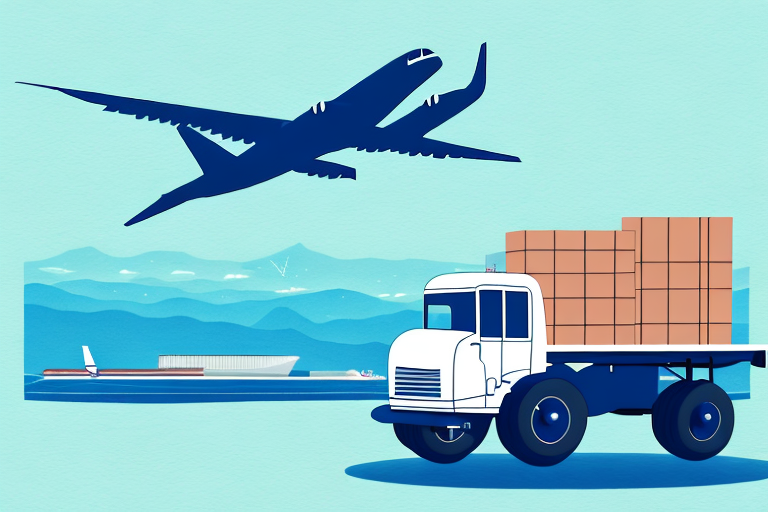7 Considerations to Make When Shipping for Your Business
If your business involves shipping products to customers, choosing the right shipping strategy is crucial. The shipping method, carrier, packaging, tracking, insurance, regulations, and customer satisfaction all play significant roles in this decision. This article delves into these considerations to help you make informed choices that enhance your business operations and customer experience.
The Importance of Choosing the Right Shipping Method
Selecting the appropriate shipping method is vital for ensuring the safety and timely delivery of your products. Different products have varying requirements that influence the best shipping approach:
- Fragile Items: Require shipping methods that offer adequate protection, such as padded packaging and specialized carriers.
- Perishable Goods: Necessitate fast and reliable delivery options, often with temperature-controlled environments.
- Bulk Shipments: May benefit from freight shipping to reduce costs per unit.
Additionally, consider the speed and cost associated with each method, as these factors directly impact your profitability. For instance, expedited shipping can enhance customer satisfaction but may increase expenses.
For international shipments, ensure compliance with customs regulations and availability of tracking services. Understanding the cultural norms and expectations of the destination country can also improve the delivery experience for your customers.
According to the Statista Global E-commerce Report 2023, businesses that optimize their shipping methods see a 20% increase in customer retention rates.
Factors to Consider When Deciding on Your Shipping Carrier
The choice of shipping carrier significantly affects your business operations. Key factors to evaluate include:
- Cost: Compare rates to find a balance between affordability and quality of service.
- Reliability: Assess the carrier's track record for on-time deliveries and minimal lost packages.
- Reputation: Opt for carriers with strong reputations for customer service and handling packages with care.
Evaluate the carrier's experience with your specific product types and review their shipping policies to ensure alignment with your business goals. Additionally, consider the variety of delivery options they offer, such as same-day delivery, weekend delivery, and advanced tracking capabilities.
Research from the Journal of Logistics Management highlights that choosing a reliable carrier can reduce shipping-related customer complaints by up to 15%.
How to Calculate Shipping Costs for Your Business
Accurate calculation of shipping costs is essential for maintaining profitability. Several factors influence these costs:
- Weight and Dimensions: Heavier and larger packages incur higher shipping fees.
- Distance: Longer shipping distances typically increase costs.
- Shipping Speed: Faster shipping methods are more expensive.
To optimize shipping costs:
- Negotiate Rates: Engage with carriers to secure discounts based on shipping volume.
- Optimize Packaging: Use lightweight and compact packaging to minimize weight and dimensions.
- Automate Calculations: Utilize shipping software to automate and accurately calculate shipping expenses.
According to a report by Investopedia, businesses can reduce shipping costs by up to 10% through effective packaging strategies.
Tips for Packaging Your Products for Safe Shipping
Proper packaging safeguards your products during transit and enhances customer satisfaction. Here are some tips:
- Use Protective Materials: Employ bubble wrap, foam inserts, or specialized containers based on product fragility.
- Optimize Package Size and Weight: Ensure packages are not excessively large or heavy, which can lead to damage and higher shipping costs.
- Seal Packages Securely: Utilize strong tape or adhesive to prevent accidental openings. Consider tamper-evident seals for added security.
Additionally, including labels or instruction manuals can clarify handling instructions and reduce the risk of damage.
The Packaging Strategies Journal emphasizes that effective packaging can decrease product damage rates by up to 25%.
The Role of Tracking and Insurance in Shipping
Implementing tracking and insurance into your shipping strategy provides security and transparency:
- Tracking: Allows both you and your customers to monitor the shipment's progress, enhancing trust and reducing inquiries about order status.
- Insurance: Protects against potential losses or damages during transit, offering financial security.
Select tracking options that fit your budget and provide the necessary level of detail. Advanced tracking can help identify and resolve issues like delays or incorrect addresses promptly.
Insurance is particularly important for high-value or fragile items. While carriers offer basic liability coverage, additional insurance ensures comprehensive protection.
Research from the Insurance Information Institute indicates that businesses utilizing shipping insurance experience a 30% reduction in loss-related expenses.
Dealing with Returns and Refunds in Your Shipping Strategy
Managing returns and refunds effectively is crucial for maintaining profitability and customer satisfaction:
- Clear Returns Policy: Develop and communicate a transparent returns policy that outlines procedures and timelines.
- Accurate Product Descriptions: Provide detailed descriptions and high-quality images to help customers make informed decisions, reducing return rates.
- Efficient Customer Support: Offer multiple support channels to address customer concerns promptly, potentially preventing returns.
Analyzing return data can reveal patterns, such as frequent returns due to damages, indicating a need to improve packaging or carrier selection.
The Business News Daily reports that streamlined returns processes can boost customer loyalty by up to 40%.
Ensuring Compliance with International Shipping Regulations
International shipping entails adhering to diverse regulations that vary by destination country:
- Customs Regulations: Ensure all shipments comply with the importing country's customs laws, including necessary documentation.
- Packaging and Labeling: Follow specific packaging and labeling requirements to avoid delays or rejections.
- Taxes and Duties: Understand and comply with applicable taxes and duties to prevent unexpected costs.
Regulations frequently change, so it's essential to stay informed through reliable sources or collaborate with customs brokers and freight forwarders who can provide expert guidance.
The U.S. Customs and Border Protection offers comprehensive resources to help businesses navigate international shipping compliance.
How to Optimize Your Shipping Strategy for Customer Satisfaction
Prioritizing customer satisfaction in your shipping strategy can lead to increased loyalty and repeat business:
- Accurate Shipping Times: Provide realistic delivery estimates to manage customer expectations.
- Clear Communication: Keep customers informed about their order status with regular updates.
- Flexible Shipping Options: Offer various shipping speeds and carriers to cater to different customer preferences.
Enhancing the unboxing experience with personalized packaging or branded messages can leave a lasting positive impression. Additionally, efficient processing and quick dispatch times contribute to overall customer satisfaction.
Investing in automated shipping software can streamline operations, reduce errors, and accelerate order fulfillment.
The Forbes Technology Council highlights that businesses leveraging advanced shipping technologies see a 35% improvement in delivery accuracy.
Innovative Technologies to Streamline Your Shipping Process
Embracing innovative technologies can significantly enhance the efficiency and effectiveness of your shipping operations:
- Automated Packaging Machines: Increase packaging speed and consistency while reducing labor costs.
- Advanced Shipping Software: Integrates with e-commerce platforms to automate label printing, tracking, and inventory management.
- Drone Delivery: Provides quick and cost-effective delivery options, especially for remote or hard-to-reach areas.
- Autonomous Vehicles: Offer potential for reduced delivery times and operational costs in the long term.
Staying ahead with technological advancements can provide a competitive edge, enabling faster deliveries and enhanced customer experiences.
According to the McKinsey Shipping Report 2023, businesses adopting automation technologies have seen a 25% increase in shipping efficiency.
In conclusion, developing an effective shipping strategy involves multiple considerations that impact both your business operations and customer satisfaction. By thoughtfully selecting shipping methods and carriers, optimizing costs, ensuring product safety, leveraging tracking and insurance, managing returns efficiently, complying with international regulations, and embracing innovative technologies, you can create a robust shipping framework that supports your business growth and enhances customer loyalty.




















